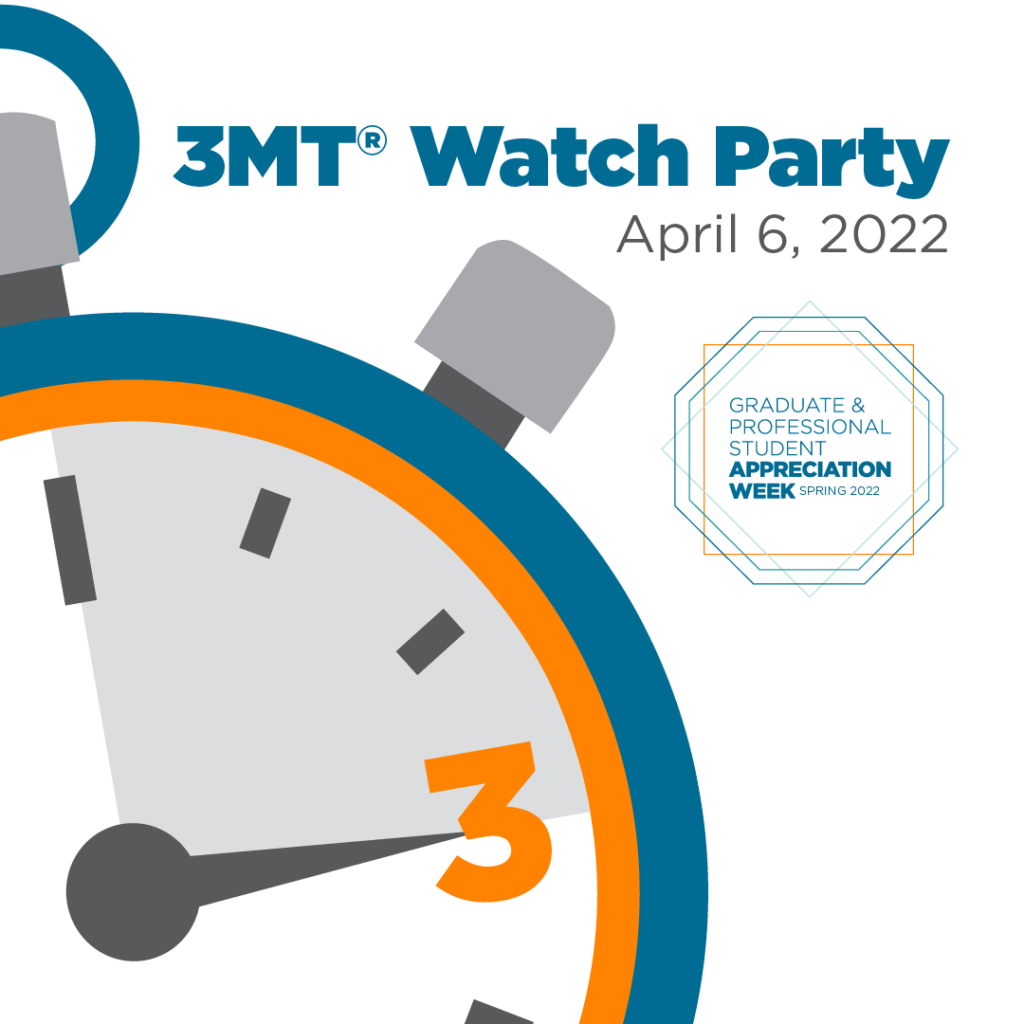
One of the Graduate School’s favorite events each year is the UT Three Minute Thesis (3MT) competition, in which graduate and professional students from across the campus are challenged to communicate their research effectively and engagingly. Using a single slide and having only three minutes to speak, participants present their thesis or dissertation research to a panel of judges that evaluate their presentations for clarity and engagement.
On April 6, attendees of the 3MT Watch Party watched video presentations by fourteen students, who prepared them under the 3MT virtual rules. Attendees were able to ask questions of the presenters while voting for their favorite as the People’s Choice. At the end, awards were announced for those selected as 1st, 2nd, and 3rd place winners by the judges, as well as the People’s Choice.
Martin Kay: 3rd Place
Martin Kay, a PhD student in physics in the College of Arts and Sciences, presented his work on using the concept of feedback control to stabilize the position of a laser beam over a long distance. Using this system, the beam can be corrected 10 times per second and with greater accuracy than any human, maintaining the alignment even in the presence of vibrations and air currents.

Caroline Znachko: 2nd Place and People’s Choice
Caroline Znachko, a PhD student in anthropology in the College of Arts and Sciences, spoke of her work with skeletal stress markers, or “windows into your childhood,” that can show evidence of adverse childhood experiences like malnutrition or psychological trauma. Her work investigates the connections between genetic changes that can occur as a result of how the body’s stress response system reacts to the environment and these skeletal stress markers, to improve the utility of these markers as biological evidence of human rights abuses.

Kriss Gabourel: 1st Place
Kriss Gabourel, a PhD student in data science and engineering in the Bredesen Center for Interdisciplinary Research and Graduate Education, introduced her work on improving intelligent tutoring computing systems which are designed to adapt based on student needs. Gabourel used a derivative of three of the six basic facial expressions identified by Charles Darwin (yes, that Charles Darwin) and a type of data processing called Deep Learning to analyze a large amount of data of math students being tutored by human students. The intention is to allow these systems to better use facial expressions to recognize comprehension levels in their students and change tactics accordingly.

All of our presenters did an incredible job of not only rising to the challenge of 3MT, but also recording the presentations on video. These 3MT presenters have shown that UT’s graduate and professional students are engaged in impressive and relevant work and that they are able to talk about that work to the world beyond those in their field.
Please take the time to view all of the presentations, if you didn’t get the chance to attend the Watch Party. It just takes 42 minutes to get to know fourteen different research projects happening right here at UT.
- Jenae Bluhm, College of Education, Health and Human Sciences
- Joseph Winberry, College of Communication and Information
- Ken Stonecipher, Herbert College of Agriculture
- Ariani Harrison, College of Architecture and Design
- Laura Horton, College of Veterinary Medicine
- Can Trinh, Haslam College of Business
- Caroline Znachko, College of Arts and Sciences
- Tabatha Rainwater, College of Education, Health and Human Sciences
- Kriss Gabourel, Bredesen Center for Interdisciplinary Studies and Graduate Education
- Caleb Brackney, College of Architecture and Design
- Ziona Kocher, College of Arts and Sciences
- Sara Sultan, Bredesen Center for Interdisciplinary Studies and Graduate Education
- Annie Dohmen, Haslam College of Business
- Martin Kay, College of Arts and Sciences